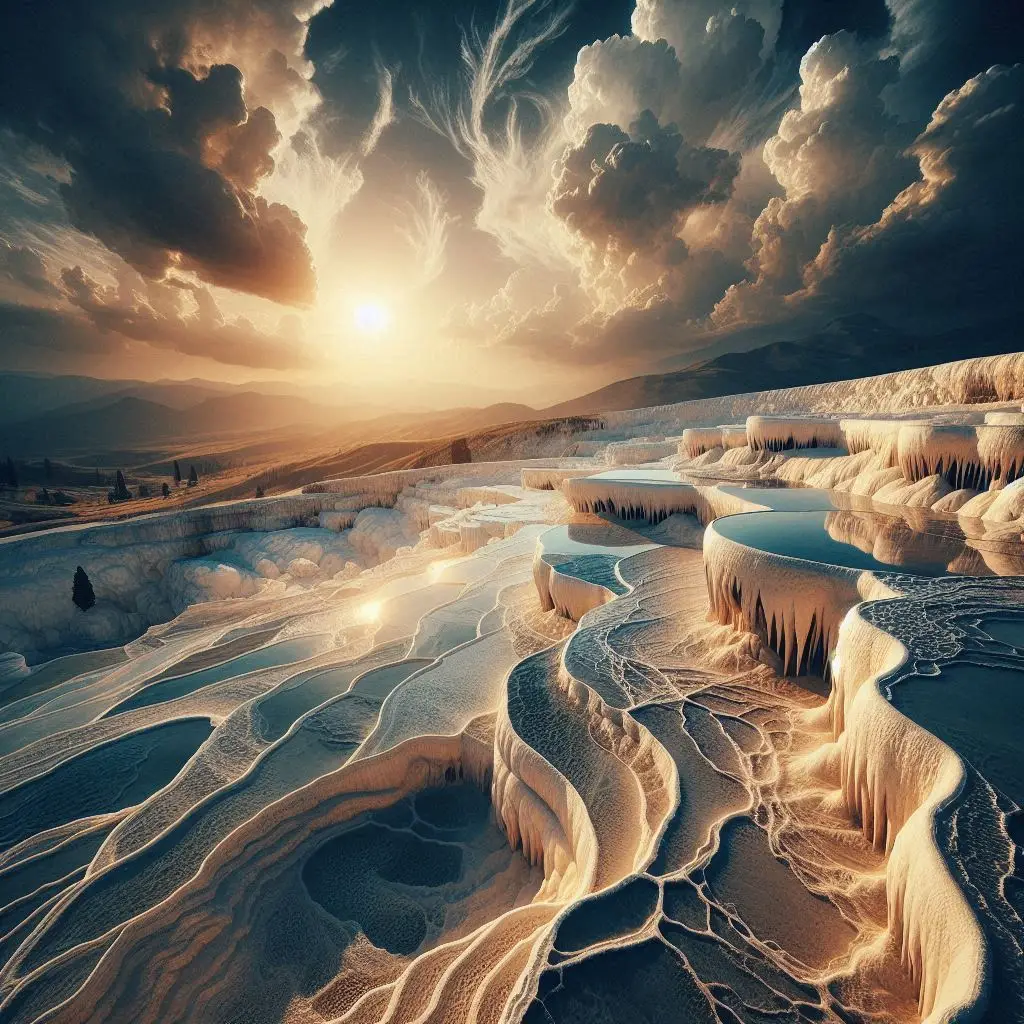
Travertine stone slab
In over a thousand words, travertine stone slab, in order to provide a comprehensive knowledge of this adaptable natural material, I will discuss the geological processes, variances, advantages, and limits of travertine stone slabs.
Stone slabs made of travertine are a fascinating example of natural material because they combine unique qualities, an interesting geological history, and a wide range of potential uses. Because of its one-of-a-kind creation process, naturally beautiful appearance, and long-lasting nature, travertine continues to be a favorite material in the fields of architecture and design.
Although travertine has a lot of advantages, such as its attractiveness to the eye and its long-lasting nature, it also has a few drawbacks, such as its porous nature and its high price. These constraints may, however, be efficiently controlled if adequate maintenance is performed and a trained expert does the installation. When considering whether or not to utilize travertine for their projects, prospective users must ensure that they give serious consideration to their own requirements, aesthetic preferences, and financial limits.
The use of travertine slabs in residential and commercial construction is, and always has been, a classic option for those who value the beauty that natural stone brings to a space. Whether it is used for flooring, worktops, or ornamental pieces, travertine brings an air of timelessly elegant refinement to every room it inhabits thanks to its smooth texture and beguiling patterning. Even as the field of interior design progresses, travertine stone continues to be a reliable and thought-provoking option for individuals who value the uniqueness, charm, and beauty that can be found in the geological craftsmanship of nature.
Because of the exceptional qualities it has and the allure it exudes to the eye, travertine stone has been put to use in building and decorating projects for many years. This article explores the world of travertine stone slabs, delving into topics such as its history, properties, uses, and care.
Geological Formation:
The main component of sedimentary rock known as travertine is calcium carbonate, which is normally produced when minerals from groundwater precipitate. This process starts in locations rich in limestone, where the combination of carbon dioxide and rainfall from subterranean springs results in a weak solution of carbonic acid. A portion of the calcium carbonate dissolves when the acidic water seeps through the limestone.
This water, which is rich in calcium carbonate, changes chemically when it rises to the surface and comes into contact with the atmosphere. Travertine is created when the dissolved minerals, mostly calcium carbonate, are deposited as new layers. These deposits build up over time to create porous rock formations with distinctive patterns and hues.
Personalities:
Porosity: With naturally occurring spaces and pores in its surface, travertine is renowned for being porous. These voids, which are sometimes filled during processing, give travertine slabs a unique personality.
Travertine comes in a variety of hues and patterns, such as beige, cream, ivory, walnut, and gold. Depending on the particular geological circumstances of its production, the patterns in the stone might be concentric, round, or linear.
Texture: The surface of travertine is textured and soft, sometimes referred to as "softly pitted." Its distinct tactile appeal distinguishes it from other natural stones such as granite and marble.
Utilization:
Flooring: Because of its aesthetic appeal, longevity, and ability to resist slippage, travertine is a popular option for flooring in both residential and commercial settings.
Countertops: Travertine is a great material for kitchen and bathroom countertops because of its inherent elegance and resilience to heat and damage.
Wall Cladding: In both indoor and outdoor environments, gorgeous accent walls or whole facades may be constructed with slabs of travertine.
Decorative aspects: This stone may be used for moldings, columns, and fireplace surrounds, among other decorative aspects.
Outdoor Use: Travertine is a great material for patios, pool decks, and walks because of its resistance to the weather.
Advantages:
Aesthetic Appeal: Designers and homeowners choose travertine because of its distinctive patterns and hues, which provide a sense of warmth and elegance to any area.
Durability: Travertine is a durable stone, but not being as hard as granite. Compared to more fragile stones like marble, it is less likely to chip or shatter and can tolerate normal wear and tear.
Simple upkeep: Travertine surfaces may retain their aesthetic appeal with regular cleaning and sealing. Because of its porous nature, stains may be avoided with appropriate sealing.
Eco-Friendly: Compared to synthetic materials, travertine is a natural stone that is less harmful to the environment.
Restrictions:
Porosity: Travertine's inherent porosity increases its stain- susceptibility. To avoid harm, spills—especially acidic ones—should be cleaned up right away.
Restricted Resistance: Although travertine is strong, it is not as heat- or scratch-resistant as quartz or granite. It is advised to use cutting boards and trivets.
Professional Installation: To guarantee a correct fit and lifespan, travertine slabs should ideally be fitted by specialists due to its unique properties.
Cost: Since travertine might be more costly than certain other natural stones, one should take their budget into account.
https://www.novintrades.com/product-details/26830?title=Construction-Stones

